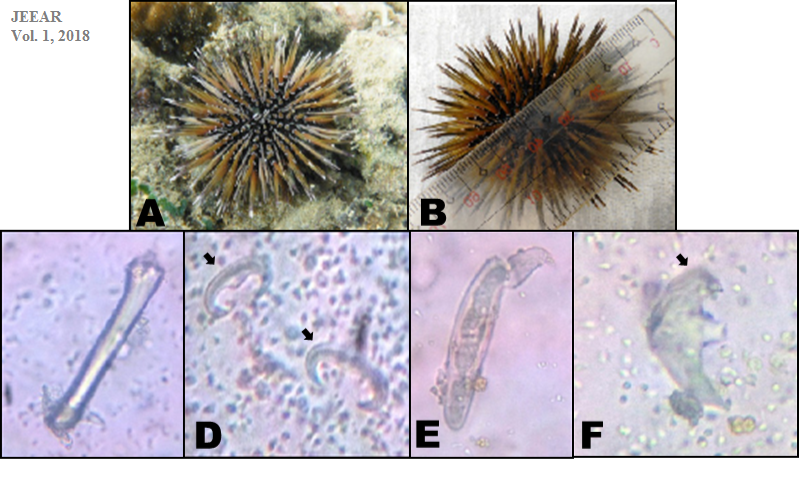Distribution of Sea Urchins in Punta Dumalag, Matina Aplaya, Davao City
Abstract
This study investigated the distribution and diversity of sea urchins along the intertidal zone of Punta Dumalag, Matina Aplaya, Davao City. A total of 100 quadrats (1m x 1 m) spaced 5 m apart, in 3 transects laid perpendicular to the shoreline, recorded a total of 347 individuals, resolved into 5 species, namely, Echinometra mathaei (rock- boring or common sea urchin), Echinothrix calamaris (Hatpin urchin), Diadema setosum (long-spine or “tuyom”), Prionocidaris verticillata (rough spine urchin), and Diadema savignyi. Among the 347 individuals recorded, Echinometra mathaei was the most abundant in the site with a total of 286 individuals. Shannon-Weiner Diversity Analysis (0.602) suggests low species diversity. Physicochemical measurements such as water temperature, pH, dissolved oxygen, and salinity revealed that the study site is suitable for the culture of sea urchins.
Read full article here.

